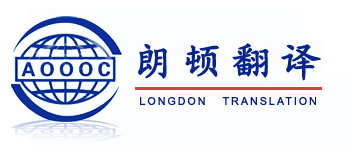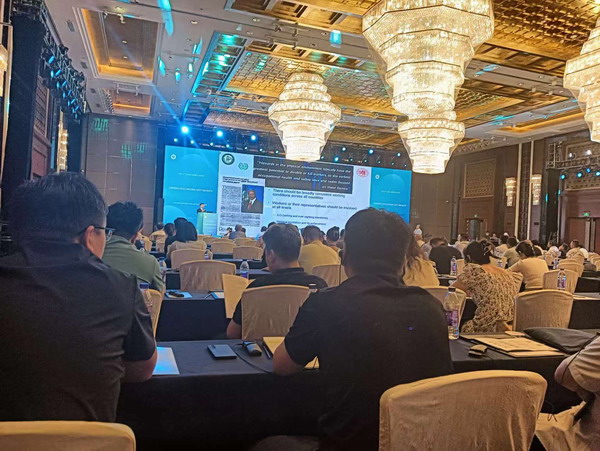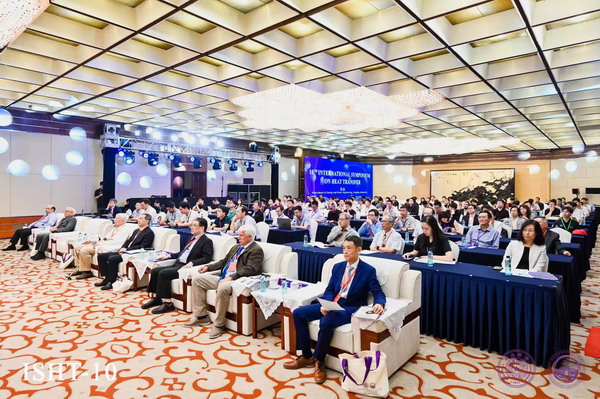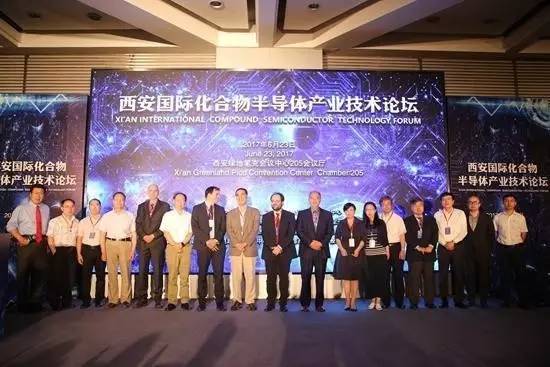Genetically modified crops resumed their march across the worldĪ»s farmland last year, with GM plants covering a record 185m hectares Ī¬ 3 per cent more than 2015. By far the largest increase was in Brazil, the engine of global GM growth, where the area expanded by 11 per cent to 44m hectares.
╚ź─ĻŻ¼▐D(zhu©Żn)╗∙ę“▐r(n©«ng)ū„╬’╗ųÅ═(f©┤)┴╦į┌╚½Ū“Ė¹Ąž╔ŽĄ─öU(ku©░)Åłä▌(sh©¼)Ņ^Ż¼ŲõĘNų▓├µĘe▀_(d©ó)ĄĮäō(chu©żng)╝o(j©¼)õøĄ─1.85ā|╣½ĒĢŻ¼▒╚2015─ĻĖ▀│÷3%ĪŻį÷Ę∙ūŅ┤¾Ą─╩Ū░═╬„Ż¼įōć°(gu©«)╩Ū╚½Ū“▐D(zhu©Żn)╗∙ę“▐r(n©«ng)ū„╬’į÷ķL(zh©Żng)Ą─ę²ŪµŻ¼ĘNų▓├µĘeöU(ku©░)┤¾11%Ż¼ų┴4400╚f(w©żn)╣½ĒĢĪŻ
The figures come from the most authoritative annual survey of GM crops worldwide, carried out by the International Service for the Acquisition of Agri-Biotech Applications, a global network of non-profit centres that promote agricultural biotechnology. The equivalent ISAAA study a year ago had shown a small decrease in planting, the first since GM crops were commercialised 20 years ago.
▀@ą®öĄ(sh©┤)ō■(j©┤)üĒ(l©ói)ūįėąĻP(gu©Īn)╚½Ū“▐D(zhu©Żn)╗∙ę“▐r(n©«ng)ū„╬’Ą─ūŅÖÓ(qu©ón)═■─ĻČ╚š{(di©żo)▓ķŻ¼š{(di©żo)▓ķė╔ć°(gu©«)ļH▐r(n©«ng)śI(y©©)╔·╬’╝╝ąg(sh©┤)æ¬(y©®ng)ė├Ę■äš(w©┤)ĮM┐ŚŻ©International Service for the Acquisition of Agri-Biotech ApplicationsŻ¼║å(ji©Żn)ĘQISAAAŻ®š╣ķ_(k©Īi)ĪŻįōĮM┐Ś╩Ūę╗éĆ(g©©)╚½Ū“ąįŠW(w©Żng)Įj(lu©░)Ż¼ŲņŽ┬ėąČÓéĆ(g©©)═ŲÅV▐r(n©«ng)śI(y©©)╔·╬’╝╝ąg(sh©┤)Ą─ĘŪĀI(y©¬ng)└¹ųąą─ĪŻįōĮM┐Śę╗─ĻŪ░Ą─蹊┐’@╩ŠŻ¼▐D(zhu©Żn)╗∙ę“▐r(n©«ng)ū„╬’ĘNų▓├µĘe┬įėą£p╔┘Ż¼▀@╩Ūūį▐D(zhu©Żn)╗∙ę“▐r(n©«ng)ū„╬’20─ĻŪ░ķ_(k©Īi)╩╝╔╠śI(y©©)╗»ĘNų▓ęįüĒ(l©ói)Ą─╩ū┤╬ĪŻ
Paul Teng of Nanyang Technological University in Singapore, ISAAA chair, attributed the upturn to various factors in different parts of the world. Ī░There was some recovery in commodity prices, which had a positive effect particularly in the US,Ī▒ he said. Ī░Favourable weather led to an increase in planting in several countries.
ISAAAų„Ž»Īóą┬╝ėŲ┬─Žč¾└Ē╣ż┤¾īW(xu©”)(Nanyang Technological University)Į╠╩┌Paul Tengīó▐D(zhu©Żn)╗∙ę“▐r(n©«ng)ū„╬’ĘNų▓├µĘe╗ųÅ═(f©┤)į÷ķL(zh©Żng)Üwę“ė┌╚½Ū“▓╗═¼Ąžģ^(q©▒)Ą─ČÓéĆ(g©©)ę“╦žĪŻĪ░┤¾ū┌╔╠ŲĘār(ji©ż)Ė±ėą╦∙╗ž╔²Ż¼▀@ė╚Ųõį┌├└ć°(gu©«)«a(ch©Żn)╔·┴╦ĘeśOė░ĒæŻ¼Ī▒╦¹▒Ē╩ŠŻ¼Ī░ėą└¹Ą─╠ņÜŌ╩╣ČÓéĆ(g©©)ć°(gu©«)╝ęĄ─ĘNų▓├µĘeį÷╝ėĪŻĪ▒
Ī░But the main driving force is that farmers appreciate the immense benefits of biotech crops for improved productivity and profitability, as well as conservation efforts,Ī▒ said Professor Teng.
╦¹▒Ē╩ŠŻ║Ī░Ą½ų„ꬥ─═Ųäė(d©░ng)ę“╦ž╩Ū▐r(n©«ng)├±šJ(r©©n)ūR(sh©¬)ĄĮ┴╦╔·╬’╝╝ąg(sh©┤)▐r(n©«ng)ū„╬’ī”(du©¼)ė┌╠ßĖ▀╔·«a(ch©Żn)┬╩║═└¹ØÖ(r©┤n)┬╩ęį╝░Łh(hu©ón)▒Ż┼¼┴”Ą─Š▐┤¾║├╠ÄĪŻĪ▒
Sales of GM seeds in 2016 were also up 3 per cent on 2015, according to data provided by Cropnosis, a research company. The market was worth $15.8bn, equivalent to 35 per cent of global commercial seed sales ($45bn).
Ė∙ō■(j©┤)蹊┐ÖC(j©®)śŗ(g©░u)Cropnosis╠ß╣®Ą─öĄ(sh©┤)ō■(j©┤)Ż¼2016─Ļ▐D(zhu©Żn)╗∙ę“ĘNūėĄ─õN(xi©Īo)╩█Ņ~ę▓▒╚2015─Ļį÷ķL(zh©Żng)3%ĪŻ▀@ēK╩ął÷(ch©Żng)Ą─ęÄ(gu©®)─Ż×ķ158ā|├└į¬Ż¼ŽÓ«ö(d©Īng)ė┌╚½Ū“╔╠śI(y©©)ĘNūėõN(xi©Īo)╩█Ņ~Ż©450ā|├└į¬Ż®Ą─35%ĪŻ
Four species still dominate GM planting: maize, soyabeans, cotton and canola (oilseed rape). The two main Ī░traitsĪ▒ or characteristics conferred by genetic engineering so far have been herbicide tolerance, which enables farmers to spray fields with a weedkiller that does not harm the crop, and insect resistance, which stops pests eating the plants.
─┐Ū░ĘNų▓Ą─ų„ę¬▐D(zhu©Żn)╗∙ę“▐r(n©«ng)ū„╬’╚į╩ŪęįŽ┬╦─ŅÉ(l©©i)Ż║ė±├ūĪó┤¾Č╣Īó├▐╗©║═ė═▓╦ūčĪŻ─┐Ū░╗∙ę“╣ż│╠┘xėĶĄ─ā╔ĘNų„ę¬╠ž³c(di©Żn)╩Ū─═│²▓▌ä®║═┐╣Žx(ch©«ng)ąįŻ¼Ū░š▀ūī▐r(n©«ng)├±┐╔ęįŽ“▐r(n©«ng)╠’ćŖ×ó│²▓▌䮯¼Ą½▓╗é¹║”▐r(n©«ng)ū„╬’Ż¼║¾š▀┐╔ęįūĶų╣║”Žx(ch©«ng)┐ą╩│▐r(n©«ng)ū„╬’ĪŻ
But new GM crops would soon propel another wave of expansion, Professor Teng said: Ī░With commercial approvals and plantings of new varieties of biotech potatoes and apples, consumers will begin to enjoy direct benefits of biotechnology with produce that is not likely to spoil or be damaged, which in turn has the potential to substantially reduce food waste and consumer grocery costs.Ī▒ For example genes added to GM apples and potatoes make them more resistant to browning or bruising when cut or bashed.
Ą½ą┬Ą─▐D(zhu©Żn)╗∙ę“ū„╬’īóĢ■(hu©¼)║▄┐ņę²░l(f©Ī)ą┬ę╗▓©öU(ku©░)ÅłŻ¼Paul Teng▒Ē╩ŠŻ║Ī░ļSų°ęį╔·╬’╝╝ąg(sh©┤)┼Óė²Ą─ą┬ŲĘĘN═┴Č╣║═╠O(p©¬ng)╣¹½@Ą├╔╠śI(y©©)╗»┼·£╩(zh©│n)║═ĘNų▓Ż¼Ž¹┘M(f©©i)š▀īó─▄ķ_(k©Īi)╩╝ŽĒ╩▄ĄĮ╔·╬’╝╝ąg(sh©┤)ĦüĒ(l©ói)Ą─ų▒Įėęµ╠ÄŻ¼▐r(n©«ng)«a(ch©Żn)ŲĘ▓╗╠½┐╔─▄ē─Ą¶╗“▒╗ŲŲē─Ż¼Å─Č°ėą┐╔─▄┤¾┴┐£p╔┘╩│ŲĘ└╦┘M(f©©i)║═Ž¹┘M(f©©i)š▀į┌╩│ŲĘĘĮ├µĄ─│╔▒ŠĪŻĪ▒└²╚ńŻ¼▒╗╠Ē╝ė▀M(j©¼n)▐D(zhu©Żn)╗∙ę“╠O(p©¬ng)╣¹║══┴Č╣Ą─╗∙ę“Ż¼┐╔╩╣╠O(p©¬ng)╣¹║══┴Č╣į┌Ūąķ_(k©Īi)╗“╩▄ĄĮū▓ō¶Ģr(sh©¬)Ė³▓╗╚▌ęūūā╔½╗“┼÷é¹ĪŻ
Although consumer and environmental groups across the world continue to resist GM crops, the resolutely pro-biotech ISAAA detects signs of changing attitudes.
▒M╣▄╩└ĮńĖ„ĄžĄ─Ž¹┘M(f©©i)š▀║═Łh(hu©ón)▒ŻłF(tu©ón)¾w└^└m(x©┤)ĄųųŲ▐D(zhu©Żn)╗∙ę“▐r(n©«ng)ū„╬’Ż¼Ą½łį(ji©Īn)Č©ų¦│ų╔·╬’╝╝ąg(sh©┤)Ą─ISAAA░l(f©Ī)¼F(xi©żn)┴╦╚╦éāæB(t©żi)Č╚▐D(zhu©Żn)ūāĄ─ę╗ą®█EŽ¾ĪŻ
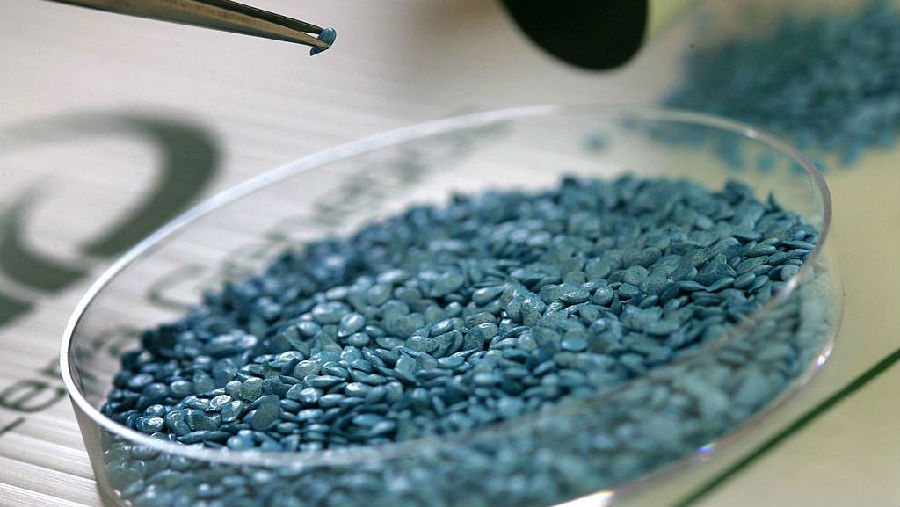
In Africa, for instance, Ī░a new wave of acceptance is emergingĪ▒, with field trials of GM banana,cowpea and sorghum under way in several countries. Even in Europe, the heartland of anti-GMsentiment, 136,000 hectares of insect-resistant maize were planted Ī¬ 17 per cent up on2015.
└²╚ńŻ¼į┌ĘŪų▐Ż¼Ī░ą┬ę╗▓©Ą─Įė╩▄└╦│▒š²į┌│÷¼F(xi©żn)Ī▒Ż¼ČÓéĆ(g©©)ć°(gu©«)╝ęš²į┌ķ_(k©Īi)š╣▐D(zhu©Żn)╗∙ę“ŽŃĮČĪó¶°Č╣║═Ė▀┴╗Ą─įć“×(y©żn)╠’ĪŻ╝┤▒Ńį┌ū„×ķĘ┤▐D(zhu©Żn)╗∙ę“┤¾▒ŠĀI(y©¬ng)Ą─ÜWų▐Ż¼ę▓ĘNų▓┴╦13.6╚f(w©żn)╣½ĒĢĘ└Žx(ch©«ng)║”Ą─▐D(zhu©Żn)╗∙ę“ė±├ūŻ¼▌^2015─Ļį÷ķL(zh©Żng)┴╦17%ĪŻ
The commercial concentration of agricultural biotechnology is set to increase this year, withmegamergers in progress between Bayer and Monsanto, Dow Chemical and DuPont, andSyngenta and ChemChina. Although the industryĪ»s critics have expressed concern, Prof Teng issupportive.
Į±─ĻŻ¼▐r(n©«ng)śI(y©©)╔·╬’╝╝ąg(sh©┤)ąąśI(y©©)Ą─╝»ųąČ╚┴Žīó╔Ž╔²Ż¼öĄ(sh©┤)Ų╠ž┤¾║Ž▓óš²į┌═Ų▀M(j©¼n)Ż¼░³└©░▌Č·(Bayer)┼c├Ž╔ĮČ╝(Monsanto)Īó╠š╩Ž╗»īW(xu©”)(Dow Chemical)┼cČ┼░Ņ(DuPont)Ż¼ęį╝░Ž╚š²▀_(d©ó)(Syngenta)┼cųąć°(gu©«)╗»╣ż(ChemChina)ĪŻ▒M╣▄śI(y©©)ā╚(n©©i)┼·įu(p©¬ng)╚╦╩┐▒Ē▀_(d©ó)┴╦ō·(d©Īn)ænŻ¼Ą½Paul Tengų¦│ų▀@ę╗┌ģä▌(sh©¼)ĪŻ
Ī░I really think that having fewer companies will be better for farmers,Ī▒ he said. Ī░The three orfour companies left will be better at carrying out groundbreaking R&D, transferringtechnology from the public sector and complying with international standards.Ī▒
╦¹šf(shu©Ł)Ż║Ī░╬ęė╔ųįšJ(r©©n)×ķŻ¼╣½╦ŠöĄ(sh©┤)┴┐£p╔┘ī”(du©¼)▐r(n©«ng)├±Ė³ėą└¹ĪŻ╩ŻŽ┬Ą─╚²╦─╝ę╣½╦Šīó─▄Ė³║├ĄžīŹ(sh©¬)╩®ķ_(k©Īi)äō(chu©żng)ąįĄ─čą░l(f©Ī)ĒŚ(xi©żng)─┐Ż¼īó╝╝ąg(sh©┤)Å─╣½╣▓▓┐ķT(m©”n)▐D(zhu©Żn)ęŲ│÷üĒ(l©ói)Ż¼▓óū±čŁć°(gu©«)ļHś╦(bi©Īo)£╩(zh©│n)ĪŻĪ▒
